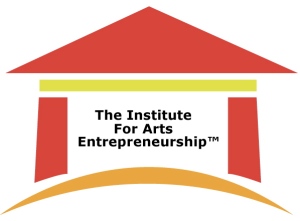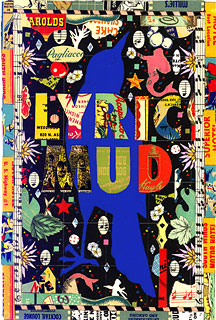One of the challenges each of us faces when we contemplate the development of our ideas into a product or service, is just exactly “how do we generate interest from others in what each of us finds important”?
How do we know if what we see, believe, feel and think will “take root in the market”? What must we do so that others will care about and value our ideas, products and services as much as we do?
Well, if I knew the perfect answer to this, I would have an orchard filled with money trees in my backyard. But what I can share, based on personal experience, are three (less-than-reliable) assumptions about how to get people to care about our ideas and three rules-of-thumb for creating conditions that might actually get them to.
(Of course we never can be sure if people will care for sure– as we know, we all are free to choose….)
Assumption #1:
The House is Burning! Jump! FIRE!

The idea of a burning platform is actually a metaphor based on supposedly a true story: In the North Sea an oil platform had caught fire and was burning fast. On it was a lone worker. He had a decision to make: Probable death if he jumped, certain death if he stayed.
What we are talking about here is creating a condition where we instill fear and apply pressure– a fear of being unable to turn back- pressure for fast, decisive action or else everything goes up in smoke.
When any of one us is presented with a “must act now” if “you want to live” strategy, most of us will support the strategy and will act. People, after all, do want to survive. However it is hard to predict how we will act. Some will get on board, others will panic and freeze, some will try and make themselves look good at the expense of others, while some will hide from the bad news.
Moral of the story: When faced with a burning platform, people will choose self-preservation over the common good.
Assumption #2: Create Buy-In

Similar to the burning platform, “buy-in” is also a rich metaphor. Creating “buy-in” is an old sales term. When we create buy-in we:
Present a strong case convincingly
Create a motivational presentation
Make sure everyone understands what’s in it for them
Close the deal by asking for a commitment
The problem is that creating “buy-in” is set up for only one kind of answer. Style and technique take the place of substance and purpose leaving us, “the audience,” not sure if we like, let alone feel good about, what we are suppose to be “buying in” to…..
Moral of the assumption: People see through the art of subtle manipulation. Care cannot be packaged to be bought.
Assumption #3 Create the Perfect Incentives

“If you want to teach a dog a new trick, give him a bone”… isn’t that how the saying goes? If you set up a scenario that rewards the behavior you seek, then you will get a treat.
The problem is that this system will only work if the rewards we are offering others are important to them. And while this system can certainly shape behavior, it does not produce care.
Take for example the customer service representative who is rewarded based on the number of completed orders they take in an hour. Predictably they will rush through each call and cut as many corners as possible so they can complete more orders and “earn” their treat. On one level the system is working because more calls are being handled per hour. On another, it is destroying the employees natural desire to provide quality service and show they care.
Moral of the story: Incentives don’t incent others to care.
Three Rules of Thumb

Rule of Thumb #1:
Find Out What is Important to the Other Person and Act On It
We live in a world where, I don’t know about you, but I certainly walk around and wonder ” Does anyone really care about anyone anymore?” People are STARVED for attention- they crave being listened to and understood.  When we ask questions and learn about others, we empower others through OUR listening and care. And when we ACT on their interests, concerns, wishes or hopes, and deliver something to them that they really care about, we find a much more receptive audience for our own ideas.
When we ask questions and learn about others, we empower others through OUR listening and care. And when we ACT on their interests, concerns, wishes or hopes, and deliver something to them that they really care about, we find a much more receptive audience for our own ideas.
The days of mass marketing and appeal are over. We are in the age of “niching” to produce thriving. A grande skim latte with 2 equals, no foam, double cup it please, is the meal du jour and so we must learn to listen carefully to others needs to cater to those we wish most to serve.
Rule of Thumb #2: Support Others In Achieving Their Goals
How does your product or service help support others in achieving their goals? Products and services must offer real tangible benefits. Put the same time and energy into your clients to help them identify and achieve from your products and services something of real value to them. Designing (and redesign) your products and services to reach the right market where real benefit will be offered. By doing so you will find your clients really do care about what you have to deliver.
Rule of Thumb #3: Speak From Your Heart 
Stop telling people what you have to offer them. Start talking about what is important to you and speak from your heart when you do.
Story: Several recovering addicts were talking in an AA meeting about how to improve treatment services. The conversation began with the usual ideas– making the community a better place by helping people. And it wasn’t long before the conversation fell flat.
Then one person got up in the meeting and told his story– a story about how in his darkest hours as an addict, in his greatest need, people he did not know listened to him. Total strangers answered his plea for help and got him into treatment. They cared about him when there wasn’t much to care about.
Moral of the story: This recovering addicts goal was indeed simple and by sharing from his heart, the entire tone and energy of the meeting changed. While he really did want to “give back to the community and care for others”, the most important ingredient to getting others in the meeting to become more involved and care, came from his telling his story- his truth- from his heart.
So, tell us your story. (This is why I created the ETA competition by the way. And you still have time to enter or encourage others to do so.)
And if you’ve joined us here at ETA because you want to learn how to better lead “your tribe” forward, or begin to build a tribe of your very own– one that will come to care about what you find most important in life– then start by aligning your words and actions in a way that reflects your honesty and integrity. Even if you don’t know what products and services you would like to offer, this would be an excellent way to begin to figure out what you should offer.
After all consider this: If you are not willing to put your wholehearted-self behind what you care about and tell the truth to the world about what is in your heart, then why should anyone really care?
Having struggled to build, for over twenty years, profitable businesses, creating ETA (that is rising from nothing), written Build a Blue Bike, (a book that teaches how to develop entrepreneurial empathy and transform it into a creative venture), and now, embarking on the journey of launching The Institute for Arts Entrepreneurship™, I can tell you it is not for the faint of heart, the insecure or vulnerable. And this is also why we as artists need entrepreneurial training– so that every single one of us can learn how to wear our he(arts) on our sleeve and build our audiences for life from the ideas we care most about.
If there is only one thing in this post which I am certain is valuable to you–forgive me for it taking so much of your time to explain- it is this: Listening to others and speaking from your heart it is the only way to build a rock solid foundation of mutual trust in, and care for, the ideas you care most about.  It also holds the key to opening the door to a sustainable artistic career: one that produces enough income for you to live happily-ever-after. Amen.
It also holds the key to opening the door to a sustainable artistic career: one that produces enough income for you to live happily-ever-after. Amen.
 Money. Money. Money. We simply can’t live with out it, and we wouldn’t want to either. Money is simply in every fiber and fabric of our lives. It is that basic and deep to us as human beings. It’s something we need to survive.
Money. Money. Money. We simply can’t live with out it, and we wouldn’t want to either. Money is simply in every fiber and fabric of our lives. It is that basic and deep to us as human beings. It’s something we need to survive. 

























